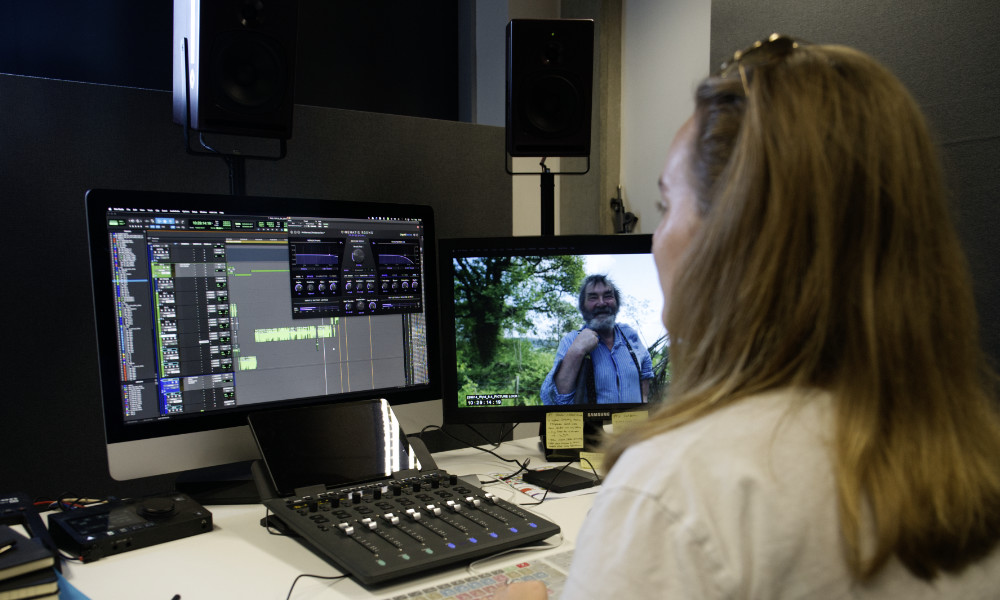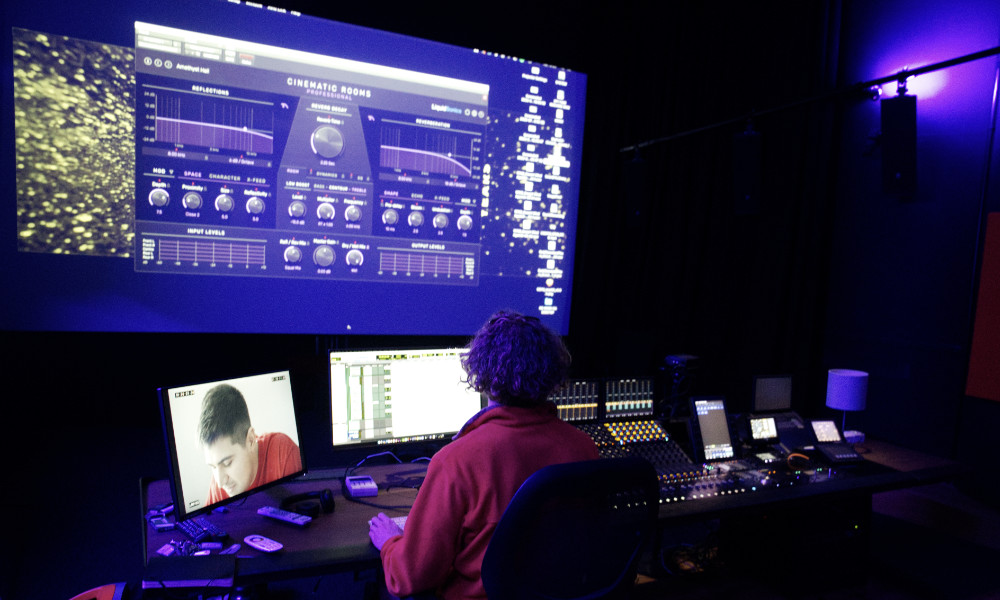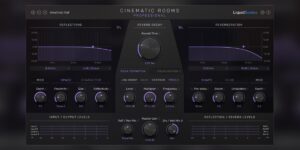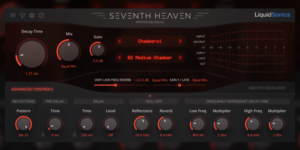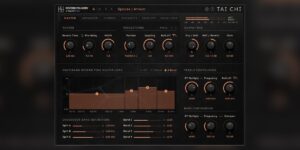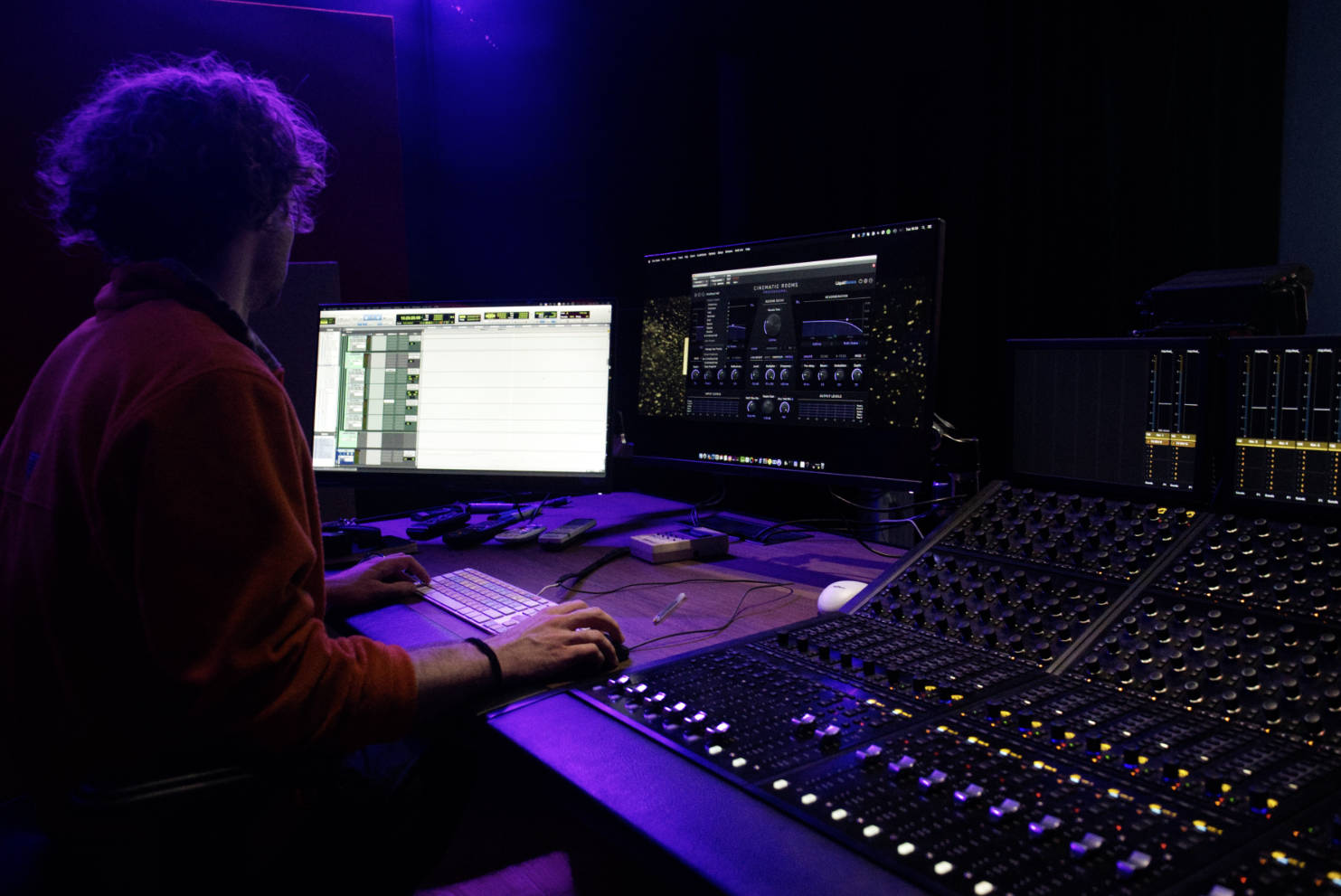
The National Film & Television School was founded in 1971 at Beaconsfield Studios in Buckinghamshire, UK. It is renowned globally for its prowess in film, television, and games education. NFTS holds a position among the top 15 international film schools, a distinction granted by The Hollywood Reporter’s 2021 rankings.
Distinguished by its strong emphasis on practical learning, NFTS stands apart by producing approximately 150 films annually. With over 90% of its courses devoted to hands-on experience, the school cultivates a distinct creative environment that distinguishes it from other UK film institutions. NFTS accommodates over 500 full-time students and extends its influence to about 1,500 participants annually through short courses in Beaconsfield, Glasgow, Leeds, and Cardiff.
Beaconsfield Studios, the core of NFTS, encompasses a comprehensive array of facilities including stages for film and television, animation studios, edit suites, sound post-production facilities, a music recording studio, and dubbing theatres. The year 2017 witnessed significant expansion and modernisation, ushering in new teaching spaces, a third cinema, and a state-of-the-art 4K Television Studio.
In 2018, NFTS was bestowed with the “BAFTA Outstanding British Contribution to Cinema Award” at the 71st British Academy Film Awards, an acknowledgment of its profound influence.
LiquidSonics reverbs are a centrepiece of the audio mixing systems at NFTS. We sat down with one of their tutors to find out how the reverbs support the courses and two of their students to talk about how they use LiquidSonics reverbs in their mixes.
Jeremy Rodeschini (Senior Supervising Engineer and Tutor)
How are LiquidSonics plugins utilised in the course curriculum, and how do they enhance the teaching experience for tutors?
At the National Film and Television School (NFTS) we use LiquidSonics Cinematic Rooms Professional in the Master of Arts (MA) in Sound Design and the MA in Composing. The courses are very practical. A student at the NFTS works in their own studio, available 24/7. That means if you study sound design, you get your own fully equipped multichannel room with Pro Tools, state of the art monitoring, controllers and plugins. In composing, it would be similar, but using a stereo setup and while we have Pro Tools as well, there we use mainly Logic.
Broadly speaking, the first year is focused on learning the craft of storytelling with the chosen discipline (sound design or composing), and the second year is focused on bringing up those skills to professional level through full blown productions and mentoring. Therefore when getting into the second year, you move into a room that is of a higher quality, more standardised and geared for busy production schedules. On top of getting their own individual rooms, students also have access to four dubbing theatres of different sizes and formats including theatrical Dolby Atmos, in order to mix their projects, and two cinemas for reviews, QC and general screenings.
Students grow by working in a real world environment, through the real workflow. LiquidSonics Cinematic Rooms Professional is available in all four dubbing theatres for mixing. Since touch ups, printing extra stems, or TV/web versions are often required from any of the second year individual students rooms, all second year students have access to the reverb every day from wherever they are. Because of the different delivery formats and mixing environments we use to ensure students are ready for the industry, we need a reverb that works consistently from stereo all the way to Dolby Atmos. LiquidSonics Cinematic Rooms Pro does that just perfectly.
Reverbs can be used to blend a dry recording into the soundscape (lav, for example), make an ADR line match the original production sound, and we have many reverb plugins to achieve this, mainly mono reverbs.
Reverbs are also an extremely important tool to inform the audience where the story is happening. The human brain does an awful lot of real time analysis without us even knowing. By catching early reflections, it tells us instantly what kind of space we are in. Cinematic Rooms can create those early reflections easily to suggest that we are in a bathroom, a train station, a narrow alley, etc… It puts sound into a location telling the story via the audio and this is very much our focus at the NFTS, it’s all about the story.
Reverbs of this kind typically need to be multichannel to mimic what would happen in real life (and nowadays make the most of immersive formats). They also enhance the sweet spot in the cinema as panning feels much more natural. One of our go-to reverbs used to be the TC M6000. Whatever you threw at it, whichever preset, just sounded great. The problem is obviously that we could never afford to have those outside of the mixing stages, they did not scale up/down formats as simply as a plugin does, and reconforming was always complicated. Although amazing, the M6000 now belongs to the past for us. We found many plugins that provided decent alternatives to the TC M6000 in terms of practicality, but it had been difficult to find a match in sound quality and versatility. Cinematic Rooms is an excellent alternative and it goes all the way to Dolby Atmos formats.
In what ways do LiquidSonics plugins cater to the needs of students who are just starting out in their educational journey?
One of our senior mixing tutors who has mixed 200+ top titles, such as many James Bond titles, likes to explain that back in the day you only had that one reverb for everything and he used the same 10 presets throughout his career. Nowadays, when I open my Pro Tools reverbs plugin folder, I have 25 different reverbs each containing 100+ presets.
I find this very intimidating for students; and kind of an obstacle in their learning and their way to grasp that we are not here “doing sound” but “telling a story”. That’s what people go to the cinema for, or watch a streaming platform for: a story. That particular brand, that particular plugin is not going to be a deal breaker for the story. Working on a feature film soundtrack is a daunting job, there isn’t much time to mess around. If you know your tools and presets, you are going to work much faster and you will be able to cater for what matters.
To some extents, I believe limitations can be useful for students starting. They have to work with what they have. Having one tool for a job can be nice. However this is not really our approach at the school. We don’t want to limit students in any way, so we had to find a compromise and this is where LiquidSonics shines for us. We have that one reverb plugin that sounds great on everything, it has a good collection of useful presets which will work right away and the controls; although limitless, can be kept simple if we want to. This is ideal as it allows students to use the plugin in the most simple way and crack on with their story telling, and as they grow and learn, they can explore other features of the reverb. The UI is extremely helpful in that respect. You never get lost and you have the most important controls put in a very obvious way in front of your eyes.
Among the available reverbs in the LiquidSonics plugin lineup, which ones are most frequently used in the course, and what factors contribute to their popularity?
The ones we use mostly for mixing dialog are the ones providing an authentic feeling of familiar locations. A couple of tweaks on those allows you to retain the clarity that is sometimes compromised with reverbs based on pure convolution. In that regard, I see presets from these folders being used a lot: post, rooms, spaces. I personally like a nonlinear reverb for surreal scenes.
And for music, it is often very different presets, such as the Dark Hall, or studios. The one that loads by default with the plugin, “Amethyst Hall”, is usually always a good starting point for music and it fits our expectation for a reverb of any kind: no matter how complex it can be and how many controls it has, just loading it and picking up a preset (from a reasonably short list) must get you close to what you want, maybe 80%, else you’re already spending too much valuable time. So, in summary, this is the incredible thing with Cinematic Rooms: it can cover pretty much anything, you get it where you want fast and it works in all formats, for music or for post.
When recommending a reverb plugin to their students, what considerations do tutors take into account? Is it primarily based on affordability, the wide range of reverbs offered, or other factors such as educational discounts?
At the NFTS, we don’t encourage students to purchase anything during their studies as we believe what we provide is everything required to learn the proper skills to become a professional sound designer/composer. We train students on the usage of those tools and they usually carry on using them when they leave our school. We typically pick tools that are either already industry standards or that we believe will become standards based on their qualities. We even participate in the design phase of some tools with some companies we believe in, and then beta test in production. We have very close connections with the industry with mixers, composers, editors coming as visiting tutors and we discuss a lot about new ways of working, changes and new tools. We try to play our part in shaping the future, not just by providing the industry with new talents, but also by shaping the toolset they will use.
As described earlier, while we like to discover new things and have a great variety of tools at our disposal, we believe having that one reverb that does it all and that you know very well is an asset, rather than having many reverbs that you’re not too sure about. Efficiency is key when mixing a long film.
In regards to pricing, this is never really a consideration in our recommendations to students. We believe in editors/mixers engaging in positive dialog with manufacturers to figure out pricing that works for everyone matching the reality of our industry. I feel this is working great with most developers such as LiquidSonics and many others that have been generous with NFTS, helping us achieve our official not-for-profit objective: “provide world-class training and education for film, television and the media industries.“
Could you provide some insights into the teaching facilities and how the LiquidSonics reverbs are set up? How many reverbs are available, and how are they utilised to support the students’ learning experience in the course, workshops, and other activities?
We have four dubbing theatres (1 x 5.1 for TV, 2 x theatrical 7.1 and 1 x Theatrical Atmos), one music recording studio and foley stage, then we have ten 5.1 sound design rooms (assigned to individual second year students all year long), ten LCR sound design rooms (assigned to first year individual students all year long), and 20 stereo music composing rooms (assigned to individual students all year long).
In your first year as a sound designer, you tracklay for 5.1 on an LCR monitoring set and the mix it in real 5.1 in the dubbing theatre. We try to build predictability skills for students using 5.1 bussing and tools (including Cinematic Rooms) on LCR speaker sets, so they can tracklay anywhere, even on headphones, which is sometimes what happens in the industry.
In your second year, you tracklay with 5.1 monitoring, but then you can mix your title in atmos in the dubbing theatre, building up on the translation/predictability skills learnt in the first year. Cinematic Rooms plays a central part in being the go-to reverb all the way through that journey.
Marios Themistocleus (NFTS Student)
How are you using LiquidSonics reverb plugins in film sound mixing, and how do they contribute to creating a captivating audio experience?
I have utilised Cinematic Rooms extensively during film mixing at the NFTS, employing it for practical and creative functions. I use discrete instances of Cinematic Rooms to enhance dialogue, sound effects, and music. In relation to dialogue, this Cinematic Rooms has become an indispensable aspect of my workflow, serving both technical and creative purposes.
It proves exceptionally beneficial in scenarios where I need to match the sound of a lavalier microphone with that of a more distantly positioned boom microphone. This approach also comes into play for ADR mixing when I aim to replicate the ambiance of a genuine environment. However, where I find this reverb particularly valuable is in its creative applications. When working on films that heavily rely on dialogue, this form of reverb becomes a pivotal instrument for shaping the narrative. Its potential is vast, whether it’s accentuating the presence of a character within a particular room, magnifying spatial dynamics during intense scenes to heighten tension, or even accentuating moments of auditory isolation. This technique has truly become an integral aspect of my sound mixing process.
Are there any specific features or qualities that make LiquidSonics plugins stand out in film and TV sound mixing?
The user interface of Cinematic Rooms is remarkably intuitive, and its user-friendly nature renders it exceptionally valuable in scenarios where time is of the essence. Additionally, the software offers a wide array of presets that serve as excellent initial configurations for establishing reverb settings.
Of even greater significance are the decorrelation settings, which prove highly advantageous in film and TV mixing. These settings become particularly valuable when dealing with the diverse array of formats required for delivery. They streamline the intricate process of downmixing, simplifying what can often be a complex undertaking.
Can you share an experience using LiquidSonics reverb plugins in a film project?
I used Cinematic Rooms for all the projects I worked on. It was a very important tool for my graduation fiction film where there were a lot of subjective moments for the main character. The film revolves around a game-changing pill that stops aging, creating a buzz of hope and yearning among a select group of lucky recipients. In this story, we follow Elle, a gifted but introverted photographer, who unexpectedly finds herself left out from this extraordinary chance. This sets her off on an intense mission to get hold of the pill, no matter what it takes. The film’s visuals have this dreamy quality that matches Elle’s journey, a mix of surreal beauty and raw ambition. But things take a turn when Elle crosses paths with the enigmatic Sonya, which makes her question everything. Should she opt for an ageless eternity, or should she follow her heart’s whispers?
Are there any specific parameters or settings that you find particularly useful or unique to our plugins?
The early reflection parameters have proven to be an invaluable asset in my dialogue and sound effects mixing endeavours. They offer a means to craft the auditory ambiance of a space without introducing excessive reverberation tail, which can often lead to muddiness, particularly in dense audio situations where music and sound effects are fighting for space.
The capacity to manipulate the position of these reflections feels like a shortcut, enabling me to swiftly adjust the proximity of sounds, eliminating the need for extensive tweaking of various settings. This functionality essentially streamlines the process, allowing for efficient control over sound placement and depth.
Have you ever encountered a situation where LiquidSonics reverb plugins helped you achieve a specific sound or atmosphere in a scene? Can you describe the techniques or approaches you used with LiquidSonics plugins to achieve that desired result?
There were a few scenes in the film “Eterna” where reverb played a big part in creating the right atmosphere for the scene. In the film’s opening, Elle is entranced by the vibrant energy of a nightclub, capturing its essence through her camera lens, her passion shining through each snapshot. Amidst the rhythmic beats and lively conversations, her friends’ words blend into an ambient hum, subtly emphasising her detachment. Here, sound is a potent storyteller, utilising Cinematic Rooms to weave music into the very fabric of the scene. The auditory landscape evolves, mirroring Elle’s emotional journey. As the night progresses, the reverb time lengthens, and the balance of early and late reflections shifts to mirror her changing connection with her surroundings. By the scene’s culmination, the room’s sound becomes an almost tangible presence, mirroring Elle’s internal transformation. This auditory choreography underscores Elle’s tale, fusing her emotions with the intricacies of sound and space.
Are there any tips or tricks you can share for getting the most out of LiquidSonics reverb plugins in film sound mixing?
The capability to adjust reverb parameters across various channels is an exceedingly advantageous storytelling tool, in my view. Manipulating the balance of reverb presents a nuanced yet impactful method of enveloping the audience within a specific scene. I applied this method notably in the movie “Eterna”. Throughout many scenes, the reverberation envelops the audience; however, for particular pivotal moments, I deliberately altered or eliminated the reverb from the rear and side channels. This strategic choice directed the audience’s attention solely to the onscreen action.
Have you explored any unique or creative applications of LiquidSonics reverb plugins in film sound mixing? Are there any specific techniques or settings that you’ve discovered to produce unconventional or innovative sound effects?
In the film “Eterna”, sound becomes a collaborator in depicting Elle’s profound detachment from reality as the story reaches its conclusion. With the use of Cinematic Rooms, the dissonance between Elle and her surroundings deepens. As she surrenders to her emotions, her perception transcends the mundane, illuminating the absurdity of the world around her, including her friends and peers.
This epiphany crystallises her conviction that eternity won’t deliver the fulfilment she craves. The auditory landscape seamlessly dances alongside the visual narrative, mirroring Elle’s altered state. Sound slows in harmony with the visuals, and thus amplifies the surrounding grotesque quality as Elle dissociates from her surroundings. By employing the reverse setting for early reflections, coupled with a high-pass filter the background dialogue created an uncanny subtle hissy texture. This elevates the scene’s impact, imbuing it with an atmospheric richness that immerses the audience in Elle’s awakening, and underscores her transformation and inner journey.
Itzel Gonzalez Estrada (NFTS Student)
How are you using LiquidSonics reverb plugins in film sound mixing, and how do they contribute to creating a captivating audio experience?
I use Cinematic Rooms for three different reasons when sound mixing for film and TV. These reasons not only make the audio experience better but also add that extra punch to the whole sound vibe that I’m looking for and that keeps the audience immersed. And I like that I only have to use one plugin for all the reverbs I need.
First off, LiquidSonics Cinematic Rooms plugin works great when simulating authentic natural environments. Their flexibility allows for the emulation of different acoustic spaces, helping me ensure that the audio matches the visual elements on screen in a realistic way. This realism helps me enhance the audience’s immersion in the story, keeping the eyes on the screen no matter how I play with the dimension of the mix.
Another essential application I use Cinematic Rooms reverb plugin for is the facilitation of seamless transitions not only between scenes, but also amongst elements of the same scene, including how I blend in the music score, no matter if it’s diegetic or non-diegetic. Allowing the control of multiple reverb parameters and the filter in the reverb tail, helps me keep the scene as natural and cohesive as I want and still maintain the immersion no matter the system I’m working with.
Finally, and the biggest reason I use Cinematic Rooms reverb for, is foley. For me, foley is one of the main elements that gives life and texture to films. As one of the elements that bring depth to characters, I believe foley is one of the main reasons the sound of a film works or not, so applying appropriate reverb is key. It helps me blend the foley with the rest of the sound effects and sync sound, making the auditory experience richer.
Are there any specific features or qualities that make LiquidSonics plugins stand out in film and TV sound mixing?
Their flexible parameters allow me to create a wide range of scenarios, from small, intimate scenes to large, expansive settings or locations. This flexibility for me is crucial in film mixing, as I don’t always have time to access different plugins, so having Cinematic Rooms helps streamline my workflow by providing a solution that I know will keep my mix natural and smooth, without having to open another plugin. The way the plugin works is very intuitive and works great with Avid Pro Tools which also helps when I try to simplify the whole process.
Can you share an experience using LiquidSonics reverb plugins in a film project?
I recently had the privilege of contributing to a documentary titled “Happy: The Elephant in the Courtroom”. The documentary is centred around insightful interviews with diverse contributors set in exterior locations mixed with archive footage. The picture is edited in a dynamic, fast way, so the audience remains focused on the storyline while absorbing the crucial legal information revolving around this elephant going to court in New York.
It was clear that the way of maintaining the audience’s focus on all the information and still making it as easy as possible to follow along, was having seamless transitions between spaces but keeping the uniqueness of each one of them. We can go from one scene where elephants are interacting in their natural habitat to a big courtroom, with some archive from 50 years ago in the middle. I used Cinematic Rooms as the sole reverb solution for sync sound, foley and hard effects, and archive footage.
By the end I was thrilled with the result as the whole film felt very fluid, where transitions were imperceptible, yet each natural space was enriched with reverb tails. The result was cohesive with harmonious spaces provided by the reverb treatment.
Are there any specific parameters or settings that you find particularly useful or unique to our plugins?
What I find very useful in Cinematic Rooms is the Dynamic section it has. In a way, you can still get a good sense of the space or the room in the film but have more control over how dense the reverb will be depending on the dialogue or the situation. Being able to automate that for scenes that require a bigger creative process is helpful when you have it all happening in one same plugin, simplifying the IO in my mix templates.
Have you ever encountered a situation where LiquidSonics reverb plugins helped you achieve a specific sound or atmosphere in a scene? Can you describe the techniques or approaches you used with LiquidSonics plugins to achieve that desired result?
One of the main reasons I started using Cinematic Rooms was because I needed a reverb that I could use for stereo and 5.1 mixing as well as Atmos. Basically, the necessity of having an efficient workflow with the least amount of bus routing and a mix template that could translate to different formats, was what pushed me to use Cinematic Rooms. For me, it is easier to get used to a reverb, let my ears understand its limits and how to make the most out of it.
Are there any tips or tricks you can share for getting the most out of LiquidSonics reverb plugins in film sound mixing?
My main tip about using Cinematic Rooms would be testing and experimenting with it as much as you can. The parameters and controls you have access to are wide and the more you are familiar with it, the more efficient your workflow will be as you will need less work from your plugin chain or any other processing that your mix will require in order to blend the reverb properly. The interface is very intuitive so it’s easy to play with, including place parameters that give a lot of dimension.
Any specific workflows or techniques that you find effective in optimising their performance?
My predominant workflow with Cinematic Rooms revolves around locating a preset that closely aligns with the specific requirements of a given instance or scene. I play with the reverb in the elements of the scene that need it the most and once I’ve identified a baseline that I like, I then alternate between the Space and Character tabs to begin tweaking. In doing so, I decide on which parameters need further refinement or if I have to change to a different preset. Once I get close to what I need from the reverb and I can hear how everything starts falling into place, I listen to them with more context. Finally, I save that as a user preset and give it a strategic name so I can keep it for future reference. This increases the efficiency of my workflow over time as my own preset library is continuously growing.
Have you explored any unique or creative applications of LiquidSonics reverb plugins in film sound mixing? Are there any specific techniques or settings that you’ve discovered to produce unconventional or innovative sound effects?
I’ve found that when dealing with sound-design effects incorporating surreal elements that require reverb but are lacking body and weight, employing a reverb preset that can supplement those missing frequencies works amazing. By utilizing Cinematic Rooms, I can sculpt and introduce subtle low and mid-frequency boosts or use the five band EQ controls. Then I use the dynamic section to add some subtle compression to “thicken” the reverb. This way I give the FX more presence as an overall in the mix without having to tracklay extra layers. This also makes the mix robust and cohesive, ensuring that it will playback in different spaces closer to my original intent.
LiquidSonics In Education
There’s never been a greater demand for music for picture and video games, and whether you’re learning online or in a school such as the NFTS you’ll need a good quality reverb! LiquidSonics has a simple 30% discount across the portfolio for students and teachers, so if you need a reverb for your studies or classes check out our Education Discount Programme today.
For transparent music and post reverbs up to Atmos 9.1.6 nothing comes close to Cinematic Rooms. Tai Chi is excellent for composers working with synths, or mixers working with vocals and guitars. Seventh Heaven is an indispensable plug-in for just about any professional mixer needing to use the incredible reverbs of the Bricasti M7 in surround workflows.
All of the LiquidSonics reverbs are available to try for free for 14 days, just head to our demos page to drop a code into your license manager and pick up the installers from the downloads page.

